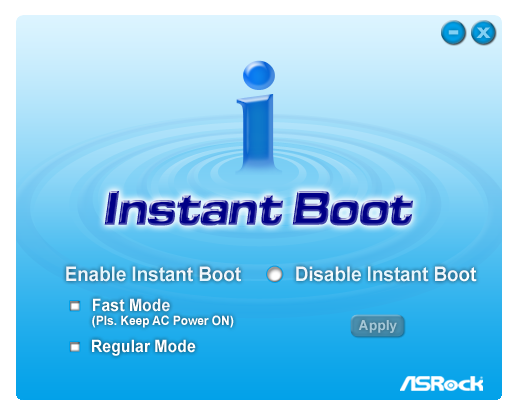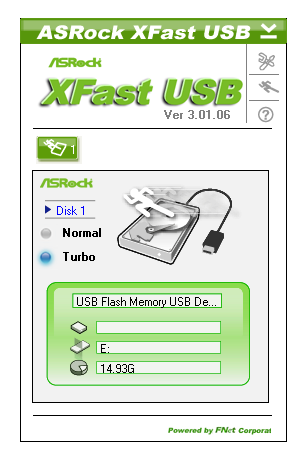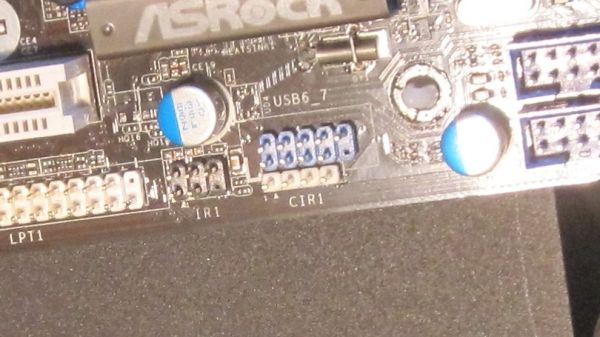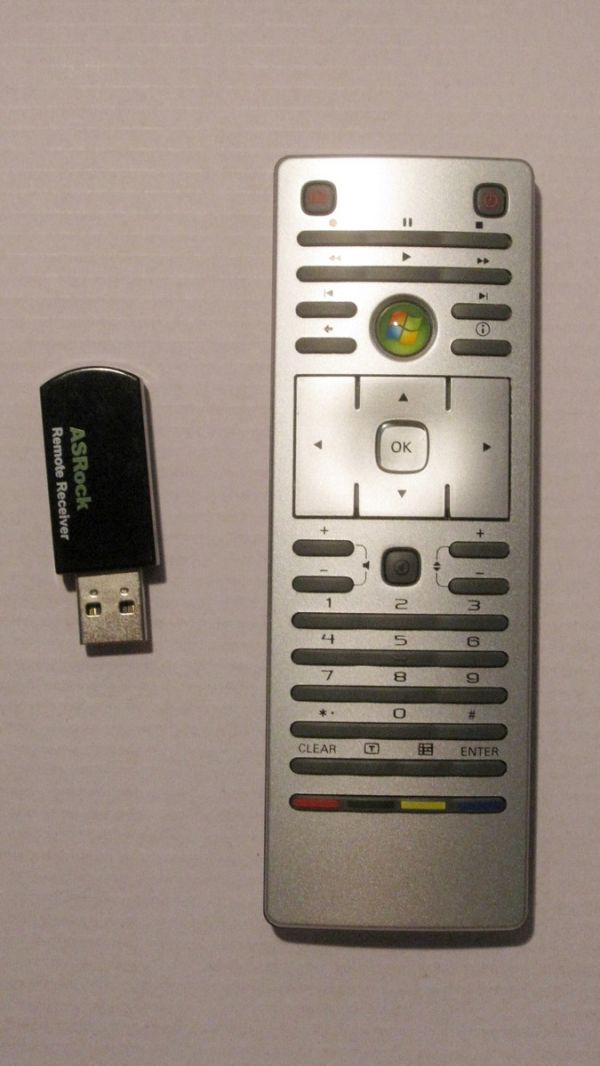H67 – A Triumvirate of Tantalizing Technology
by Ian Cutress on March 27, 2011 6:25 PM EST- Posted in
- Motherboards
- Sandy Bridge
- H67
Board Features
| Market Segment | Mainstream H67 |
| CPU Interface | LGA 1155 |
| CPU Support | i3/i5/i7 Sandy Bridge |
| Chipset | H67 |
| Base Clock Frequency | 100 MHz |
| DDR3 Memory Speed | 1000 or 1333 MHz |
| Core Voltage | Auto |
| CPU Clock Multiplier | Dependant on CPU |
| DRAM Voltage | Auto, 1.2V to 1.8V in 0.015V increments |
| DRAM Command Rate | Auto, 1N or 2N |
| Memory Slots |
Four 240-pin DDR3 DIMM slots in dual-channel Regular unbuffered DD3 memory Up to 32GB total supported |
| Expansion Slots |
1 x PCI Express 2.0 x16 slot 2 x PCI Express 2.0 x1 slots 1 x PCI slot |
| Onboard SATA/RAID |
2 x SATA 6.0 Gb/s ports (white) with RAID 0, 1, 5 and 10 3 x SATA 3.0 Gb/s ports (blue) with RAID 0, 1, 5 and 10 1 x eSATA 3.0 Gb/s ports |
| Onboard |
2 x SATA 6.0 Gb/s ports (white) 3 x SATA 3.0 Gb/s ports (blue) 1 x Floppy connector 1 x IR header 1 x CIR header 1 x Print Port header 1 x COM port header 1 x HDMI_SPDIF header 1 x Power LED header Front Panel audio connector 3 x USB 2.0 header (for 6 ports) 1 x USB 3.0 header (for 2 ports) |
| Onboard LAN | Realtek RTL8111E Gigabit Ethernet |
| Onboard Audio | Realtek ALC892 7.1-Channel HD Audio |
| Power Connectors |
24-pin EATX Power connector 8-pin EATX 12V Power connector |
| Fan Headers |
1 x CPU Fan connector (4-pin) 3 x Chassis Fan connectors (3 x 3-pin) 1 x PS/2 Keyboard Port |
| I/O Panel |
1 x D-Sub 1 x DVI-D 1 x HDMI Port 1 x DisplayPort 1 x Optical SPDIF Out Port 4 x USB 2.0 Ports 2 x USB 3.0 Ports (Etron EJ168A) 2 x eSATA 3Gb/s Port 1 x LAN (RJ-45) Gigabit Ethernet Audio Connectors |
| BIOS | 1.3 |
In the Box
- I/O shield
- USB 3.0 front panel
- USB 3.0 rear bracket
- Anaglyph Red-Blue 3D Glasses
- 2 x SATA cables
- 4 x HDD screws
- 6 x Chassis screws
My favorite addition to a Sandy Bridge motherboard packages comes in again – ASRock like supplying a USB 3.0 front bracket with their motherboards that comes with a space to put in an SSD – easily a product of $15 value if it were available separately. Also in the package is a pair of retro anaglyph 3D glasses if you own any video in red-blue 3D format.
The motherboard also comes with an infra-red receiver and remote control, designed to work with your Media center software. The infra-receiver must be connected to a front-panel USB which is in turn connected to the CIR motherboard connector:
Instructions to install this are all in the manual. The manual was oddly not on the CD we received with the motherboard, but is available online. The remote itself seems fairly generic, but does not have a flashing LED to signify when you are pressing a button (a must-have for any remote control in my opinion), but the package does come with two CR-2032 coin batteries for the remote.
Software
As with the P67 Extreme4 review, ASRock have packaged most of their utilities into one program, making it quicker and easier to install and uninstall. With their CD, apart from the driver updates, ASRock include three programs:
ASRock eXtreme Tuning Utility (AXTU)
The AXTU that ships with the H67M-GE/HT is essentially the same software that comes with the P67 Extreme4, except it comes with all the extras required for on-processor graphics. Though as you might be able to tell from this first picture, it cannot exactly read the frequency of the graphics side accurately. Mind you, I would love a 10300 MHz GPU!
The fan control is pretty standard for ASRock fare – out of the headers on the board you can control the CPU fan and two of chassis fans. The AXTU will define a power curve/line for the fans given your suggested target temperature and max speed. Ultimately this is not the most awesome utility in the world for fan speeds, but it does the job it is programmed to do.
The overclocking section of the AXTU allows the standard selection of voltages, but also the CPU Ratio and Graphics frequency. In this case, you can define the maximum CPU Ratio – as we are using a 2500K on H67, it is a 37x limit on the single-core with turbo boost. The graphics frequency setting allows all the way up to 3000 MHz in 50 MHz steps, but as with all these options, requires a reboot. Even then, just because you selected it does not mean it is stable. Have a quick gander on my overclocking results for this board to see what I mean.
ASRock Instant Boot

ASRock’s Instant Boot is designed to help decrease the time to boot, by when you select shutdown, it will perform a full restart, then kick a form of hibernation in and enter low power mode. Thus when you press the power button next, the OS will appear a lot quicker than a full boot. As the CPU stays at stock on H67, we found no issues with Instant Boot.
ASRock XFast USB

If you remember XFast USB from our previous ASRock article, then you may remember that when installed and enabled, it essentially blew the competition away in terms of read/write and our standard copy benchmark. It is no exception on H67. There's a lack of information online as to exactly how this software works, and the line from ASRock is that the 'XFast USB software modifies part of the USB driver, allowing it to multi-task and enhance the performance - ASRock are continually tuning the performance for better results'. In practice, this works really well.















56 Comments
View All Comments
MrSpadge - Wednesday, March 30, 2011 - link
Well done, Gigabyte! And it's a shame how poorly the others are doing in comparison. I fI wanted high power consumption I could just stick with an old machine or get an AMD..Not wanting to start a bashing / flame war. It's just that in my eyes the exceptional power consumption (especially idle) of the Sandy Bridge + IGP (plus excellent performance) is what makes it really attractive for really many roles.
MrS
trogthefirst - Thursday, March 31, 2011 - link
Actually i was torn between H67/61 and one of those 785G/880G platforms for my aunt recently - non gaming build In the end she needed multi display scalable to possibly 3-4 displays so i went with a cheapo 880G and an $70ish AthlonII X3 With the Surround View feature you could run, with a Radeon GPU up to 4 displays (2 from integrated graphics) and 2 off something like a passively cooled HD 4350/5450 Sounds like a lot of expansion, features, etc for such a cheap platform if u ask me!loimlo - Thursday, March 31, 2011 - link
Dear IanWould you like to share us with Power cumsumption measurement detail?
1. Is it DC or AC draws?
2. How do you measure the watts? From the wall plug by using Kill-a-watt?
3. Did you give not so useful MB's energy-efficiency software like ASRock IES, Gigabyte Energy Saver?
That said, I never had good experience with these softwares, especially Gigabyte one.
ShadowVlican - Thursday, April 7, 2011 - link
did you guys measure total system power consumption, or is that just motherboard? looking to build a HTPC, would love something modern and doesn't eat powertpk911 - Wednesday, April 20, 2011 - link
Intel to release Z68 chipsets in first half of MayMonica Chen, Taipei; Steve Shen, DIGITIMES [Wednesday 20 April 2011]
http://www.digitimes.com/news/a20110419PD212.html
Intel will release its Z68 chipsets in the first half of May, with Gigabyte Technology likely to be the first major motherboard maker to launch Z68-based products as soon as its embargo expires. Gigabyte's offerings will include its top-end GA-Z68X-UD7-B3 model.
Motherboard makers have also reportedly been informed that Intel will focus more on its Z- and H-series chipsets.
The share of P67-series motherboards will begin dropping once the Z68 is launched and the segment will gradually be phased out, with the P-series not being included in Intel's next generation chipsets.
...just a quick update, if I may :)
gsuburban - Sunday, February 12, 2012 - link
I wanted to upgrade from an Asus P5 series board and found most of the P8 boards had no floppy or ide (pata) interface on them. Since I still have 2 great BenQ 1655 DVD recorders, they wouldn't be usable without buying a PCI PATA card. After looking matters over I didn't see much benefit in using up 2 of 6 SATA ports since I have at least 4 hard drives and would be limited on SATA ports etc.I thought it over and discovered the P8H67-V and P8H67-M Pro by Asus still had the ide interface on board. No floppy but at least the IDE was there which would yield 6 SATA ports available without using them for the DVD-Optical.
I use XP Pro still since it does have it's advantages in some areas and not having the floppy drive is the pits as you can't load AHCI drivers via the F6 prompt in setup. I tried all sorts of ideas such as a custom image that included the AHCI drivers etc without success.
The P67 boards are totally fine and they run fast with the right CPU and memory but they are best used with Windows 7. The H67 boards save you about $250 since you don't need a video card, the boards are less than the P67's and with the select models, you get an IDE port which also frees up 2 SATA ports for those who still have IDE devices.
H67 would be my choice for high performance every day computing since the graphics are much improved from the days of G series and price is low, around $105.
I think it's too soon to eliminate the floppy and IDE interface at any rate.